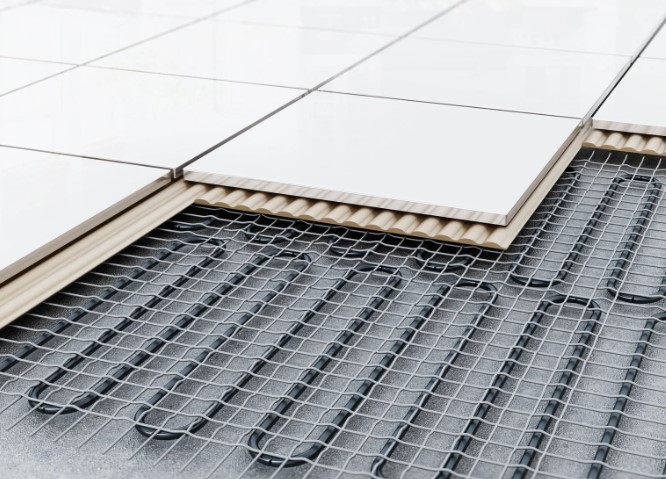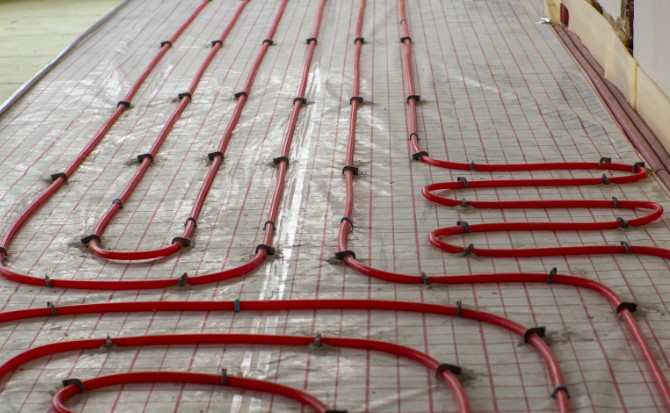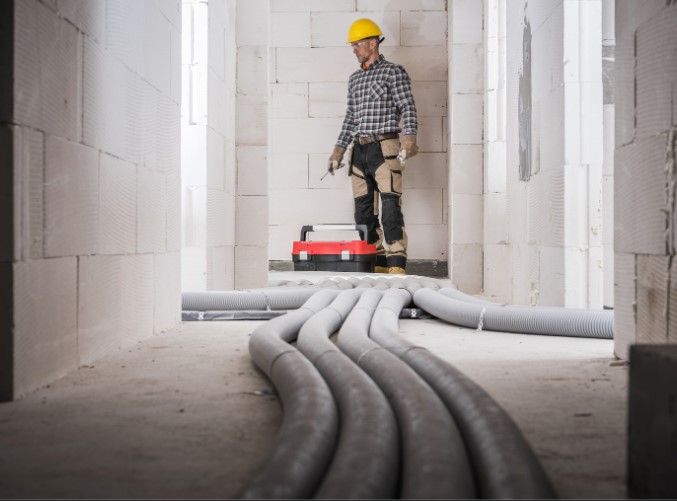- Why Does Underfloor Heating Need Bleeding?
- What Tools Do You Need to Bleed Underfloor Heating?
- A Step-By-Step Guide On How to Bleed Underfloor Heating System?
- Common Problems When Bleeding Underfloor Heating & How to Fix Them?
- How Often Should You Bleed Underfloor Heating?
- Conclusion
- FAQs About Bleeding Underfloor Heating
Underfloor heating (UFH) is an efficient as well as most comfortable way to heat your home. However, like any water-based heating system, air can get trapped in the pipes, causing reduced efficiency and uneven heating.
If your underfloor heating is not working properly, has cold spots, or makes strange gurgling noises, it may be time to bleed the system.
In this guide, I’ll walk you through how to bleed underfloor heating step by step, ensuring your system runs smoothly and efficiently.
Why Does Underfloor Heating Need Bleeding?
Over time, air can become trapped in your UFH system, leading to several issues, including:
- Uneven heating – Some rooms or areas feel colder than others.
- Reduced efficiency – The system struggles to circulate warm water.
- Strange noises – Gurgling or bubbling sounds in the pipes.
- Higher energy costs – The boiler works harder to maintain temperature.
Bleeding your underfloor heating system removes these trapped air pockets, allowing hot water to circulate properly and ensuring optimal performance.
What Tools Do You Need to Bleed Underfloor Heating?
Before starting, gather the necessary tools to make the process easier:
- Adjustable spanner – To open and close valves.
- Flat-head screwdriver – For certain bleed points.
- Bleed key (if applicable) – Some systems require a bleed key.
- Towel or bucket – To catch any water that leaks out.
Tip: Always turn off the heating system before bleeding to avoid hot water splashes!

A Step-By-Step Guide On How to Bleed Underfloor Heating System?
Step 1 – Turn Off the Heating System
- Switch off the boiler or heat pump to prevent water circulation during bleeding.
- Wait for the system to cool down before proceeding.
Step 2 – Locate the Underfloor Heating Manifold
- The manifold is usually near the boiler or a central location.
- It consists of flow and return valves for different heating zones.
Step 3 – Open the Valves to Release Air
- Start with one zone at a time to avoid pressure imbalances.
- Slowly open the bleed valve or air vent until you hear a hissing sound.
- Keep the valve open until water flows steadily without bubbles.
Step 4 – Monitor the Water Flow
- The water may appear frothy or bubbly at first—this is normal.
- Once the water runs clear, close the valve firmly but not too tight.
Step 5 – Check the Boiler Pressure and Restart the System
- After bleeding, check the boiler pressure gauge—it should be between 1 and 1.5 bar.
- If the pressure is too low, refill the system using the filling loop.
- Turn the heating back on and test the system for even heat distribution.

Common Problems When Bleeding Underfloor Heating & How to Fix Them?
| Problem | Possible Cause | Solution |
| No water coming out of the valve | Low system pressure | Check and increase boiler pressure |
| Cold spots remain after bleeding | Air still trapped in pipes | Repeat the process and bleed all zones |
| Boiler pressure drops too low | Too much water released | Refill and repressurise the system |
| Gurgling noises after bleeding | Partial air pockets remain | Bleed again and check pressure |
If your underfloor heating still isn’t working properly after bleeding, it may need a full system flush or professional servicing.

How Often Should You Bleed Underfloor Heating?
- At least once a year – Before winter to ensure efficiency.
- Whenever you notice cold spots – If certain areas aren’t heating properly.
- If the system makes noises – Gurgling or bubbling sounds indicate trapped air.
Conclusion
Bleeding your underfloor heating system is essential for maintaining efficient heating and even warmth throughout your home. By following these simple steps, you can eliminate airlocks, improve circulation, and reduce energy costs.
Regular maintenance ensures your UFH system runs smoothly, so don’t wait until winter—check and bleed your system now!
Related Article: Heat Pump Vs Condenser Dryer: Which One To Choose?
FAQs About Bleeding Underfloor Heating
1. Can I bleed underfloor heating myself, or do I need a professional?
Yes! Bleeding underfloor heating is a simple DIY task that you can do yourself. However, if problems persist after bleeding, it’s best to call a professional.
2. How long does it take to bleed an underfloor heating system?
It usually takes 10-30 minutes, depending on the number of zones in your system.
3.Will bleeding UFH improve my heating efficiency?
Yes! Removing trapped air improves circulation, heating performance, and reduces energy costs.
4. Do electric underfloor heating systems need bleeding?
No, electric underfloor heating does not require bleeding because it doesn’t use water.


0 Comments